11 libraries (sets of components) for Vue, which is worth knowing in 2018
⬝ 11 libraries (sets of components) for Angular , which you should know about in 2018
⬝ 11 libraries (sets of components) for Vue , which you should know about in 2018
⬝ 11 libraries (sets of components) for React , which you should know about in 2018
In the previous article, we talked about popular libraries for React. Today we present to your attention 11 libraries for Vue, which are worth paying attention to this year.

Analysis of downloads statistics from NPM for the last 6 months indicates that here, with a large margin from competitors, React is in the lead, Angular is in second place, and Vue is in third place.
')
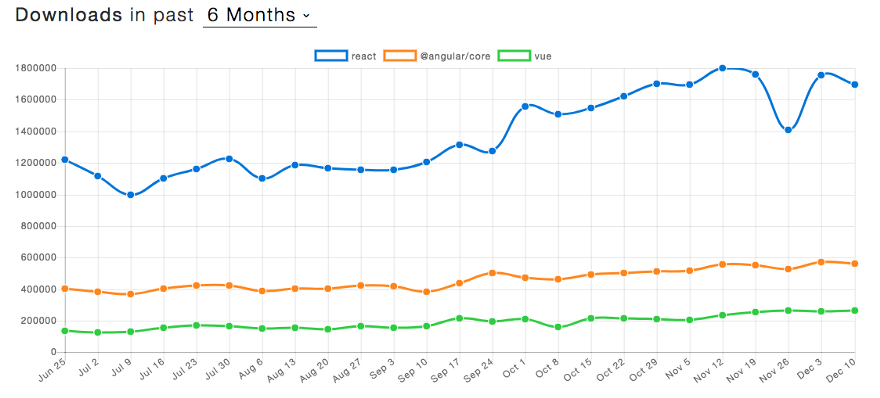
Vue, Angular and React downloads in the second half of 2017 according to NPM
In contrast to the models of work on larger-scale systems, which are React and Angular, support for Vue, an open-source project, one developer is involved, Evan Y. The project is funded by a crowdsourcing scheme. Evan says that this is one of the features of the project that distinguishes him from the rest, as it inspires to write code of higher quality than usual and to create excellent documentation.
Vue has about 80 thousand stars on GitHub, this framework is used by many companies, including Adobe and GitLab. The popularity of Vue exceeds expectations, and everything indicates that it will continue to grow.

GueHub Vue, Angular and React data as of December 13th, 2017
Much of the success of Vue is due to its component model. Working with Vue components, as is the case with React and Angular, means splitting the interface into small blocks. This contributes to the use of a modular approach to the development, reuse of such units, maintaining the uniformity of the appearance of applications. All components of Vue, in addition, are instances of Vue, which means that they take the same objects with parameters (except for some special parameters needed for the root object) and provide the developer with the same possibilities for handling events in their life cycle.

Application development using Vue components
Having discussed in two words the framework itself, we turn to the description of libraries for it.
The Vuetifyjs library received more than 7 thousand stars on GitHub. It gives developers the ability to create user interfaces using the principles of Google Material Design. In its release, V 1.0 Alpha, you can find more than 80 components that are suitable for reuse and are designed using semantic principles based on simple and clear property names that are easy to remember and use.

The component library vuematerial makes available to the developer components that accurately follow the principles of Google Material Design. She scored about 5 thousand stars on GitHub, compatible with all modern web browsers, supports dynamic themes. The creators of the library strive to make its API as simple and convenient as possible.
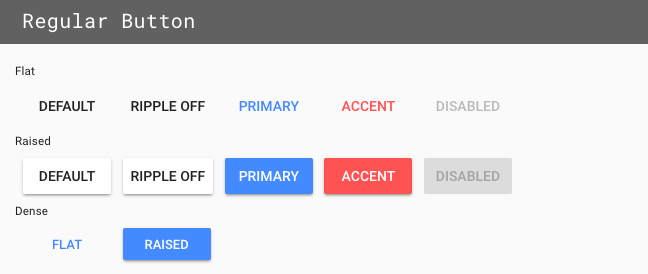
The Keen-UI library, although its developers have clearly drawn ideas from the Material Design concept mentioned here more than once, is not a real set of Material Components. It includes only components that use JavaScript, it is not a CSS framework and does not include the grid system or typographic styles. Keen-UI has about 3 thousand stars on GitHub.
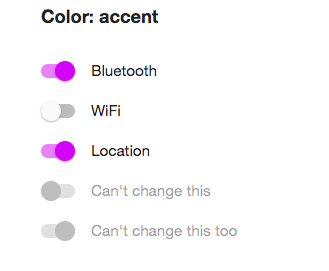
The very popular element library, which is an extensive set of customizable components for Vue 2.0, has about 21st thousands of stars on GitHub. This is impressive. Although the library documentation was originally designed for people who know Chinese, an active community has developed around element, whose work on, among other things, translating documentation, helps everyone to use this library.

The Buefy library is a collection of components built using the capabilities of Vue and Bulma . On GitHub, it collected about 2 thousand stars, the components that can be detected in it are suitable, without additional efforts from the developer, to create applications that use responsive design. Although there are not so many components in this library, it is definitely worth a look.

The bootstrap-vue library has about 3 thousand stars on GitHub. It is designed to create responsive web applications, in the development of which are oriented primarily on mobile platforms. The library is built on the basis of Vue and Bootstrap 4. It is designed for Vue 2.4+, it implements WAI-ARIA automatic markup, aimed at creating web projects that are convenient for people with disabilities.

The AT-UI library was created specifically for desktop web applications. When working with it, we apply a technical process involving the use of NPM, WebPack and Babel. Although the library documentation (not the first time in this review) can cause difficulties for an English-speaking audience, it includes a decent collection of simple and convenient components for developing interfaces.

Fish-UI is a web development toolkit using the power of WebPack and ES2015. Despite the meager documentation, the Fish-UI library is noteworthy, as it contains more than 35 well-structured components that allow you to create simple and intuitive interfaces that are not overloaded with unnecessary details.
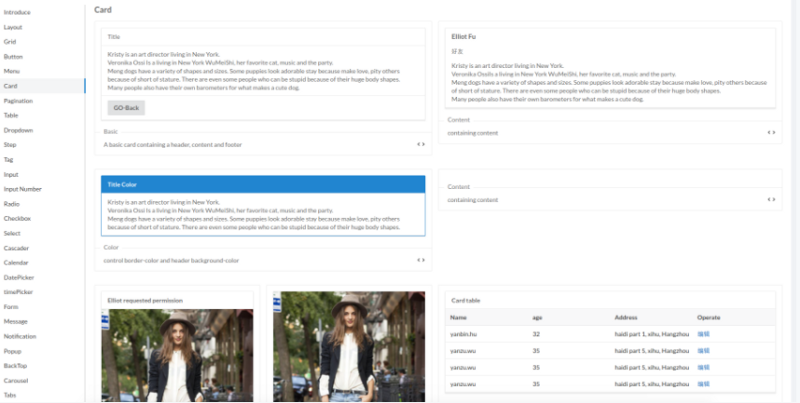
The popular Quasar project, with more than four thousand stars on GitHub, includes dozens of Vue components that are rich in features and suitable for developing responsive web projects and hybrid mobile applications. The components are designed as Web Components, so they include HTML markup, CSS styles and JavaScript code. This makes it possible to use them simply by including the corresponding HTML tags in the templates.
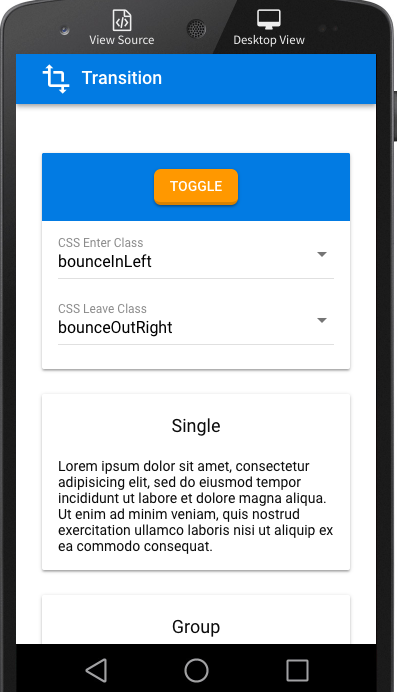
The Muse UI library, with about 5,000 stars on GitHub, is a collection of components for Vue 2.0 using Material Design. Here, for the umpteenth time, it would be nice to know Chinese to dive into the documentation, but the possibilities of the library are well worth the effort to master it.

A very popular library of components Vux got about 10 thousand stars on GitHub. It is designed to develop mobile applications, and its creators were inspired by the project weUI. The library has good documentation (the original of which is written in Chinese), in which you can find interactive demo versions of the components.
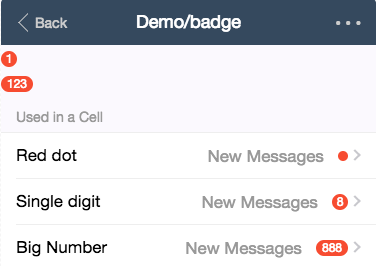
Individual components for use in Vue-based projects can be found on the awesome-vue page in the components and libraries section. Perhaps the main thing when using stand-alone components is to preserve the uniformity of the user interface.
In this article we looked at popular libraries for Vue. The dynamics of the development of this web framework suggests that in 2018, very, very many may turn to it. In his favor they say the ease of development, speed and versatility. We hope our today's review will help those of you who are looking for libraries for your projects on Vue to find exactly what they need.
Dear readers! If you are using Vue, please talk about the libraries for this framework that you like.

⬝ 11 libraries (sets of components) for Vue , which you should know about in 2018
⬝ 11 libraries (sets of components) for React , which you should know about in 2018
In the previous article, we talked about popular libraries for React. Today we present to your attention 11 libraries for Vue, which are worth paying attention to this year.

Vue
Analysis of downloads statistics from NPM for the last 6 months indicates that here, with a large margin from competitors, React is in the lead, Angular is in second place, and Vue is in third place.
')

Vue, Angular and React downloads in the second half of 2017 according to NPM
In contrast to the models of work on larger-scale systems, which are React and Angular, support for Vue, an open-source project, one developer is involved, Evan Y. The project is funded by a crowdsourcing scheme. Evan says that this is one of the features of the project that distinguishes him from the rest, as it inspires to write code of higher quality than usual and to create excellent documentation.
Vue has about 80 thousand stars on GitHub, this framework is used by many companies, including Adobe and GitLab. The popularity of Vue exceeds expectations, and everything indicates that it will continue to grow.

GueHub Vue, Angular and React data as of December 13th, 2017
Much of the success of Vue is due to its component model. Working with Vue components, as is the case with React and Angular, means splitting the interface into small blocks. This contributes to the use of a modular approach to the development, reuse of such units, maintaining the uniformity of the appearance of applications. All components of Vue, in addition, are instances of Vue, which means that they take the same objects with parameters (except for some special parameters needed for the root object) and provide the developer with the same possibilities for handling events in their life cycle.

Application development using Vue components
Having discussed in two words the framework itself, we turn to the description of libraries for it.
1. Vuetify
The Vuetifyjs library received more than 7 thousand stars on GitHub. It gives developers the ability to create user interfaces using the principles of Google Material Design. In its release, V 1.0 Alpha, you can find more than 80 components that are suitable for reuse and are designed using semantic principles based on simple and clear property names that are easy to remember and use.

2. Vue Material
The component library vuematerial makes available to the developer components that accurately follow the principles of Google Material Design. She scored about 5 thousand stars on GitHub, compatible with all modern web browsers, supports dynamic themes. The creators of the library strive to make its API as simple and convenient as possible.

3. Keen UI
The Keen-UI library, although its developers have clearly drawn ideas from the Material Design concept mentioned here more than once, is not a real set of Material Components. It includes only components that use JavaScript, it is not a CSS framework and does not include the grid system or typographic styles. Keen-UI has about 3 thousand stars on GitHub.

4. Element
The very popular element library, which is an extensive set of customizable components for Vue 2.0, has about 21st thousands of stars on GitHub. This is impressive. Although the library documentation was originally designed for people who know Chinese, an active community has developed around element, whose work on, among other things, translating documentation, helps everyone to use this library.

5. Buefy
The Buefy library is a collection of components built using the capabilities of Vue and Bulma . On GitHub, it collected about 2 thousand stars, the components that can be detected in it are suitable, without additional efforts from the developer, to create applications that use responsive design. Although there are not so many components in this library, it is definitely worth a look.

6. Bootstrap-Vue
The bootstrap-vue library has about 3 thousand stars on GitHub. It is designed to create responsive web applications, in the development of which are oriented primarily on mobile platforms. The library is built on the basis of Vue and Bootstrap 4. It is designed for Vue 2.4+, it implements WAI-ARIA automatic markup, aimed at creating web projects that are convenient for people with disabilities.

7. AT-UI
The AT-UI library was created specifically for desktop web applications. When working with it, we apply a technical process involving the use of NPM, WebPack and Babel. Although the library documentation (not the first time in this review) can cause difficulties for an English-speaking audience, it includes a decent collection of simple and convenient components for developing interfaces.

8. Fish-UI
Fish-UI is a web development toolkit using the power of WebPack and ES2015. Despite the meager documentation, the Fish-UI library is noteworthy, as it contains more than 35 well-structured components that allow you to create simple and intuitive interfaces that are not overloaded with unnecessary details.

9. Quasar
The popular Quasar project, with more than four thousand stars on GitHub, includes dozens of Vue components that are rich in features and suitable for developing responsive web projects and hybrid mobile applications. The components are designed as Web Components, so they include HTML markup, CSS styles and JavaScript code. This makes it possible to use them simply by including the corresponding HTML tags in the templates.

10. Muse UI
The Muse UI library, with about 5,000 stars on GitHub, is a collection of components for Vue 2.0 using Material Design. Here, for the umpteenth time, it would be nice to know Chinese to dive into the documentation, but the possibilities of the library are well worth the effort to master it.

11. Vux
A very popular library of components Vux got about 10 thousand stars on GitHub. It is designed to develop mobile applications, and its creators were inspired by the project weUI. The library has good documentation (the original of which is written in Chinese), in which you can find interactive demo versions of the components.

About individual components and additional libraries
Individual components for use in Vue-based projects can be found on the awesome-vue page in the components and libraries section. Perhaps the main thing when using stand-alone components is to preserve the uniformity of the user interface.
Results
In this article we looked at popular libraries for Vue. The dynamics of the development of this web framework suggests that in 2018, very, very many may turn to it. In his favor they say the ease of development, speed and versatility. We hope our today's review will help those of you who are looking for libraries for your projects on Vue to find exactly what they need.
Dear readers! If you are using Vue, please talk about the libraries for this framework that you like.

Source: https://habr.com/ru/post/346220/
All Articles